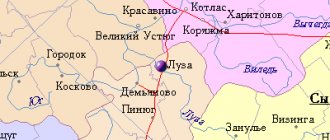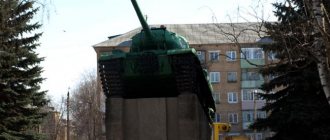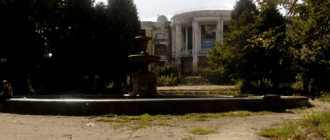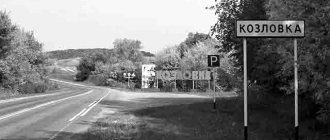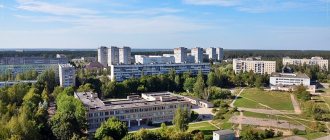This toponym has other meanings, see Yukhnov.
| City Yukhnov
|
| A country | Russia, Russia |
| Subject of the federation | Kaluga regionKaluga region |
| Municipal district | Yukhnovsky |
| urban settlement | Yukhnov |
| Coordinates | 54°45′00″ n. w. 35°14′00″ E. d. / 54.75000° n. w. 35.23333° E. d. / 54.75000; 35.23333 (G) [www.openstreetmap.org/?mlat=54.75000&mlon=35.23333&zoom=12 (O)] (Z)Coordinates: 54°45′00″ N. w. 35°14′00″ E. d. / 54.75000° n. w. 35.23333° E. d. / 54.75000; 35.23333 (G) [www.openstreetmap.org/?mlat=54.75000&mlon=35.23333&zoom=12 (O)] (I) |
| Chapter | Mochalova Elena Vyacheslavovna |
| Based | in 1410 |
| City with | 1777 |
| Center height | 150 |
| Population | ↘6153[1] people (2016) |
| Names of residents | Yukhnovchane, Yukhnovchanin, Yukhnovchanka; Yukhnovites, Yukhnovets |
| Timezone | UTC+3 |
| Telephone code | +7 48436 |
| Postcode | 249910 |
| Vehicle code | 40 |
| OKATO code | [classif.spb.ru/classificators/view/okt.php?st=A&kr=1&kod=29250501 29 250 501] |
| Yukhnov Moscow |
| Kaluga Yukhnov |
K: Settlements founded in 1410
Yukhnov
a city in the Central Federal District of the Russian Federation, the administrative center of the Yukhnovsky district of the Kaluga region.
Geography
Located on the right bank of the Ugra at the confluence of the Kunova River, on the A130
“Moscow-Roslavl-border with Belarus”, 35 km from the Myatlevskaya railway station on the Kaluga-Vyazma line, 85 km northwest of Kaluga.
| Distance from Yukhnov between cities by road:[2] | ||||||||
| Moscow ~ 214 km Obninsk ~ 106 km Maloyaroslavets ~ 91 km | ||||||||
| Mozhaisk ~ 124 km Vereya ~ 98 km | Kaluga ~ 87 km Tula ~ 195 km Ryazan ~ 382 km | |||||||
| Roslavl ~ 178 km Bobruisk ~ 460 km | ||||||||
How to get to the Pavlishchev Bor estate
The closest stop to the attraction, “Sanatorium Pavlishchev Bor,” is located in the village of Pavlishchevo. From the Kaluzhskaya-1 bus station, bus number 45 goes here on schedule. The Yukhnov - Vypolzovo route also stops here.
By car from Kaluga you need to go in a north-west direction and when you exit onto the M3 highway (Kyiv highway) turn left. At the fork after the village of Kurovskoye you will need to choose the direction according to the road sign for Vyazma and at the nearest intersection turn right onto the P132 highway. Next, follow the road sign “Pavlishchev Bor”. It will take you 2.5 km to get to the desired location.
It will be convenient to create your own route using a special website.
Estate Stepanovskoye-Pavlishchevo, or Pavlishchev Bor: video
Story
Yukhnov has been known since the 15th century, from the founding of the Yukhnovsky Kazan Monastery (Yukhnovskaya Pustyn) on the banks of the Ugra. It was destroyed by the Poles in 1611 and restored in 1633.
In 1777, by decree of Catherine II, it received city status; since 1796 - a county town in the Yukhnovsky district of the Smolensk province[19]. The development of the city in the 19th century was associated with the construction of the Moscow-Warsaw highway. Local merchants were engaged in buying bread, flaxseed, raw hides and rafting timber along the Ugra to the Oka. Before the revolution, two timber mills operated in the city.
In 1921, the city was almost destroyed by fire, but was soon rebuilt. A starch factory, a musical and toy factory, a flax mill, and a printing house appeared.
Since 1929, Yukhnov has become the regional center of the Yukhnovsky district of the Sukhinichi district of the Western region (since 1944 in the Kaluga region).
During the Great Patriotic War there were heavy battles in the Yukhnov area.
At the beginning of October 1941, on the Warsaw highway, a combined detachment of paratroopers under the command of Major I.G. Starchak heroically held the defense at the bridge over the Ugra River, and 20 km away. to the east, on the Izver River, fighting bloody battles with the superior forces of the 57th Motorized Corps of the Wehrmacht.
On October 6, reinforcements arrived to help the paratroopers - a company of Podolsk cadets and a battery of 76-mm cannons.
On October 9, 1941, Starchak’s detachment, which had been significantly thinned out during the battles, was replaced by units of the 17th Tank Brigade under the command of Major N. Ya. Klypin.
| Wikisource has texts on the topic Report on the combat operations of a separate parachute battalion |
I. G. Starchak about the defense in the Yukhnov area in October 1941
[20]:
Perhaps, from the point of view of common sense, an attempt to hold back the advance of enemy columns with a small detachment seemed daring and senseless, but I believed and still believe that excessive caution and prudence do not always bring success in military affairs...
With their heroic actions, the “Starchakites” thwarted the plan for the rapid capture of Maloyaroslavets, and thereby helped to gain the necessary time to organize defense on the approaches to Moscow[21].
At the beginning of 1942, surrounded units of the strike group of the 33rd Army of Lieutenant General Mikhail Efremov, cavalrymen of the legendary 1st Guards Cavalry Corps under the command of P. A. Belov fought in these places [22].
The city was liberated on March 5, 1942 during the Rzhev-Vyazemsk offensive operation[23][24].
On the western outskirts of the city, on the site of battles between paratroopers and cadets of Podolsk military schools, the Mound of Glory was erected. One of the streets in the city of Yukhnov was named “Dasantnaya”, and I. G. Starchak was awarded the title of honorary citizen of the city of Yukhnov[25].
Legends of Pavlishchevo Bor
Residents of the village say that the estate is haunted. In particular, at dusk, near the colonnade of a manor house, a mysterious silhouette in a cloak is often noticed, and frightening images look into the windows at night. Incomprehensible groans, creaks, knocks on the roof and loud “breathing” are heard in the building. Sometimes the sounds of a piano can be heard from inside (Elizaveta Platonovna was a pianist).
Local teenagers are happy to share the story of “ghost hunters” who allegedly discovered a creature from the other world in one of the dilapidated buildings. And the spirits of the former owner of the estate and the young girl who died here several years ago appear here.
© Juliette17
Few people dare to go down into the basement with massive vaulted ceilings and numerous arches because of the supposed ghosts that live there. Most likely, this is fiction, but many believe in it, as there are rumors about the corpses of tortured people buried in the dungeons.
Legends about the Pavlishchev Bor estate are passed down from generation to generation. They say that the former owners hid a treasure on its territory, so taciturn individuals with metal detectors appear here with enviable regularity. However, over many years of searching, not even hints of treasure were found; in any case, there are no official reports about this.
© DK1974
Economy
- Timber processing enterprises (OJSC Orion, State Institution Yukhnovselles)
- branch of Novaya Zvezda LLC (garment factory)
- OJSC Avtomobilist (passenger transportation)
- small enterprises for the assembly and installation of plastic windows (Matvey and Egor LLC, Lang Ros LLC)
- Yukhnovsky loaf (production of bakery products).
Yukhnov is the center of an agricultural region: rye, wheat, oats, barley, and flax are grown. They raise cattle, pigs, and sheep.
Notes
- ↑ 12
www.gks.ru/free_doc/doc_2016/bul_dr/mun_obr2016.rar Population of the Russian Federation by municipalities as of January 1, 2016 - Calculation of distances between cities on roads.
- taking into account the cities of Crimea
- [www.gks.ru/free_doc/doc_2016/bul_dr/mun_obr2016.rar Population of the Russian Federation by municipalities as of January 1, 2016. Table “31. Population of cities and towns by federal districts and constituent entities of the Russian Federation as of January 1, 2016.” RAR archive (1.0 MB)]
- ↑ 123456789101112131415
[www.MojGorod.ru/kaluzhsk_obl/juhnov/index.html People's encyclopedia “My City”. Yukhnov]. Retrieved November 20, 2013. [www.webcitation.org/6LLSz9VZK Archived from the original on November 20, 2013]. - [demoscope.ru/weekly/ssp/rus59_reg2.php All-Union Population Census of 1959. The size of the urban population of the RSFSR, its territorial units, urban settlements and urban areas by gender] (Russian). Demoscope Weekly. Retrieved September 25, 2013. [www.webcitation.org/6GDOghWC9 Archived from the original on April 28, 2013].
- [demoscope.ru/weekly/ssp/rus70_reg2.php All-Union Population Census of 1970 The size of the urban population of the RSFSR, its territorial units, urban settlements and urban areas by gender.] (Russian). Demoscope Weekly. Retrieved September 25, 2013. [www.webcitation.org/6GDOiMstp Archived from the original on April 28, 2013].
- [demoscope.ru/weekly/ssp/rus79_reg2.php All-Union Population Census of 1979 The size of the urban population of the RSFSR, its territorial units, urban settlements and urban areas by gender.] (Russian). Demoscope Weekly. Retrieved September 25, 2013. [www.webcitation.org/6GDOjhZ5L Archived from the original on April 28, 2013].
- [demoscope.ru/weekly/ssp/rus89_reg2.php All-Union Population Census of 1989. Urban population]. [www.webcitation.org/617x0o0Pa Archived from the original on August 22, 2011].
- “Modern Explanatory Dictionary”: ed. "Great Soviet Encyclopedia", 1997
- [www.perepis2002.ru/ct/doc/1_TOM_01_04.xls All-Russian Population Census 2002. Volume. 1, table 4. Population of Russia, federal districts, constituent entities of the Russian Federation, districts, urban settlements, rural settlements - regional centers and rural settlements with a population of 3 thousand or more]. [www.webcitation.org/65AdCU0q3 Archived from the original on February 3, 2012].
- [www.gks.ru/bgd/regl/B09_109/IssWWW.exe/Stg/d01/tabl-21-09.xls Number of permanent population of the Russian Federation by cities, urban-type settlements and districts as of January 1, 2009]. Retrieved January 2, 2014. [www.webcitation.org/6MJmu0z1u Archived from the original on January 2, 2014].
- [kalugastat.gks.ru/wps/wcm/connect/rosstat_ts/kalugastat/resources/43355b804c49726b93a9bf052efb10e3/collection_numbers.doc All-Russian population census 2010. Number and distribution of the population of the Kaluga region (volume 1)]. Retrieved January 30, 2014. [www.webcitation.org/6N0plt79D Archived from the original on January 30, 2014].
- [kalugastat.gks.ru/wps/wcm/connect/rosstat_ts/kalugastat/resources/d6c77a0041cf1c62ba38fe2d59c15b71/Population+by+MO.mht Population by municipal districts and urban districts 2011-2014]. Retrieved July 20, 2014. [www.webcitation.org/6RCfOHmMJ Archived from the original on July 20, 2014].
- [www.gks.ru/free_doc/doc_2012/bul_dr/mun_obr2012.rar Population of the Russian Federation by municipalities. Table 35. Estimated resident population as of January 1, 2012]. Retrieved May 31, 2014. [www.webcitation.org/6PyOWbdMc Archived from the original on May 31, 2014].
- [www.gks.ru/free_doc/doc_2013/bul_dr/mun_obr2013.rar Population of the Russian Federation by municipalities as of January 1, 2013. - M.: Federal State Statistics Service Rosstat, 2013. - 528 p. (Table 33. Population of urban districts, municipal districts, urban and rural settlements, urban settlements, rural settlements)]. Retrieved November 16, 2013. [www.webcitation.org/6LAdCWSxH Archived from the original on November 16, 2013].
- [www.gks.ru/free_doc/doc_2014/bul_dr/mun_obr2014.rar Table 33. Population of the Russian Federation by municipalities as of January 1, 2014]. Retrieved August 2, 2014. [www.webcitation.org/6RWqP50QK Archived from the original on August 2, 2014].
- [www.gks.ru/free_doc/doc_2015/bul_dr/mun_obr2015.rar Population of the Russian Federation by municipalities as of January 1, 2015]. Retrieved August 6, 2015. [www.webcitation.org/6aaNzOlFO Archived from the original on August 6, 2015].
- Yukhnov // Encyclopedic Dictionary of Brockhaus and Efron: in 86 volumes (82 volumes and 4 additional). - St. Petersburg, 1890-1907.
- Starchak I. G., 1965.
- Starchak. Known and Unknown, 2012.
- Ilyushechkin, Mosyagin, 2014.
- [yukhnov.xost.ru/history/h12/ Yukhnov - Liberation of the city]
- Koronovsky N.V., 2007.
- Maslov V. E, 1995, [www.ugra.alexandrovi.ru/kraev/foto_uchnov/Uhnov_Maslov_1995.htm In the Yukhnov direction].
Literature
- Yukhnov // Encyclopedic Dictionary of Brockhaus and Efron: in 86 volumes (82 volumes and 4 additional). - St. Petersburg, 1890-1907.
- Maslov V. E.
[www.biblus.ru/default.aspx/Default.aspx?book=8q15q09a8 Yukhnov Regional History. feature article]. - Kaluga: Priokskoye Book Publishing House, “Stozhary”, 1995. - 172 p. - Starchak I. G.
[books.google.ru/books?id=uSFIAAAAMAAJ&q From the sky - into battle] / Literary record of I. M. Lemberik. - M.: Voenizdat, 1965. - 184 p. — (War memoirs). — 75,000 copies. - Ilyushechkin A., Mosyagin M.
[books.google.ru/books?id=DPHrBAAAQBAJ&pg=PP1&dq=Varshavskoe+highway+-+at any+cost.+ v=onepage&q=%D0%AE%D1%85%D0%BD%D0%BE%D0%B2&f=false Warsaw highway - at any cost. 1942-1943]. - M.: Tsentrpoligraf, 2014. - 280 p. — 2500 copies. — ISBN 978-5-227-05473-9. - Koronovsky N.V.
[books.google.ru/books?id=uKSKMwAACAAJ&dq The Unfinished War: Yukhnov 1941-1943]. - M.: LKI, 2007. - 80 p. — 5000 copies. — ISBN 978-5-382-00253-8.
Excerpt characterizing Yukhnov
“And I could be in his place?” Rostov thought to himself and, barely holding back tears of regret for the fate of the sovereign, in complete despair he drove on, not knowing where and why he was going now. His despair was the greater because he felt that his own weakness was the cause of his grief. He could... not only could, but he had to drive up to the sovereign. And this was the only opportunity to show the sovereign his devotion. And he didn’t use it... “What have I done?” he thought. And he turned his horse and galloped back to the place where he had seen the emperor; but there was no one behind the ditch anymore. Only carts and carriages were driving. From one furman, Rostov learned that the Kutuzov headquarters was located nearby in the village where the convoys were going. Rostov went after them. The guard Kutuzov walked ahead of him, leading horses in blankets. Behind the bereytor there was a cart, and behind the cart walked an old servant, in a cap, a sheepskin coat and with bowed legs. - Titus, oh Titus! - said the bereitor. - What? - the old man answered absentmindedly. - Titus! Go threshing. - Eh, fool, ugh! – the old man said, spitting angrily. Some time passed in silent movement, and the same joke was repeated again. At five o'clock in the evening the battle was lost at all points. More than a hundred guns were already in the hands of the French. Przhebyshevsky and his corps laid down their weapons. Other columns, having lost about half of the people, retreated in frustrated, mixed crowds. The remnants of the troops of Lanzheron and Dokhturov, mingled, crowded around the ponds on the dams and banks near the village of Augesta. At 6 o'clock only at the Augesta dam the hot cannonade of the French alone could still be heard, who had built numerous batteries on the descent of the Pratsen Heights and were hitting our retreating troops. In the rearguard, Dokhturov and others, gathering battalions, fired back at the French cavalry that was pursuing ours. It was starting to get dark. On the narrow dam of Augest, on which for so many years the old miller sat peacefully in a cap with fishing rods, while his grandson, rolling up his shirt sleeves, was sorting out silver quivering fish in a watering can; on this dam, along which for so many years the Moravians drove peacefully on their twin carts loaded with wheat, in shaggy hats and blue jackets and, dusted with flour, with white carts leaving along the same dam - on this narrow dam now between wagons and cannons, under the horses and between the wheels crowded people disfigured by the fear of death, crushing each other, dying, walking over the dying and killing each other only so that, after walking a few steps, to be sure. also killed. Every ten seconds, pumping up the air, a cannonball splashed or a grenade exploded in the middle of this dense crowd, killing and sprinkling blood on those who stood close. Dolokhov, wounded in the arm, on foot with a dozen soldiers of his company (he was already an officer) and his regimental commander, on horseback, represented the remnants of the entire regiment. Drawn by the crowd, they pressed into the entrance to the dam and, pressed on all sides, stopped because a horse in front fell under a cannon, and the crowd was pulling it out. One cannonball killed someone behind them, the other hit in front and splashed Dolokhov’s blood. The crowd moved desperately, shrank, moved a few steps and stopped again. Walk these hundred steps, and you will probably be saved; stand for another two minutes, and everyone probably thought he was dead. Dolokhov, standing in the middle of the crowd, rushed to the edge of the dam, knocking down two soldiers, and fled onto the slippery ice that covered the pond. “Turn,” he shouted, jumping on the ice that was cracking under him, “turn!” - he shouted at the gun. - It’s holding!... The ice was holding it, but it was bending and cracking, and it was obvious that not only under a gun or a crowd of people, but under him alone, it would now collapse. They looked at him and huddled close to the shore, not daring to step on the ice yet. The regiment commander, standing on horseback at the entrance, raised his hand and opened his mouth, addressing Dolokhov. Suddenly one of the cannonballs whistled so low over the crowd that everyone bent down. Something splashed into the wet water, and the general and his horse fell into a pool of blood. No one looked at the general, no one thought to raise him. - Let's go on the ice! walked on the ice! Let's go! gate! can't you hear! Let's go! - suddenly, after the cannonball hit the general, countless voices were heard, not knowing what or why they were shouting. One of the rear guns, which was entering the dam, turned onto the ice. Crowds of soldiers from the dam began to run to the frozen pond. The ice cracked under one of the leading soldiers and one foot went into the water; he wanted to recover and fell waist-deep. The nearest soldiers hesitated, the gun driver stopped his horse, but shouts were still heard from behind: “Get on the ice, let’s go!” let's go!" And screams of horror were heard in the crowd. The soldiers surrounding the gun waved at the horses and beat them to make them turn and move. The horses set off from the shore. The ice holding the foot soldiers collapsed in a huge piece, and about forty people who were on the ice rushed forward and backward, drowning one another. The cannonballs still whistled evenly and splashed onto the ice, into the water and, most often, into the crowd covering the dam, ponds and shore. On Pratsenskaya Mountain, in the very place where he fell with the flagpole in his hands, Prince Andrei Bolkonsky lay, bleeding, and, without knowing it, moaned a quiet, pitiful and childish groan. By evening he stopped moaning and became completely quiet. He didn't know how long his oblivion lasted. Suddenly he felt alive again and suffering from a burning and tearing pain in his head. “Where is it, this high sky, which I did not know until now and saw today?” was his first thought. “And I didn’t know this suffering either,” he thought. - Yes, I didn’t know anything until now. But where am I? He began to listen and heard the sounds of approaching horses and the sounds of voices speaking French. He opened his eyes. Above him was again the same high sky with floating clouds rising even higher, through which a blue infinity could be seen. He did not turn his head and did not see those who, judging by the sound of hooves and voices, drove up to him and stopped. The horsemen who arrived were Napoleon, accompanied by two adjutants. Bonaparte, driving around the battlefield, gave the last orders to strengthen the batteries firing at the Augesta Dam and examined the dead and wounded remaining on the battlefield. - De beaux hommes! [Beauties!] - said Napoleon, looking at the killed Russian grenadier, who, with his face buried in the ground and the back of his head blackened, was lying on his stomach, throwing one already numb arm far away. – Les munitions des pieces de position sont epuisees, sire! [There are no more battery charges, Your Majesty!] - said at that time the adjutant, who arrived from the batteries that were firing at Augest. “Faites avancer celles de la reserve, [Have it brought from the reserves,” said Napoleon, and, having driven off a few steps, he stopped over Prince Andrei, who was lying on his back with the flagpole thrown next to him (the banner had already been taken by the French, like a trophy) . “Voila une belle mort, [This is a beautiful death,”] said Napoleon, looking at Bolkonsky. Prince Andrei realized that this was said about him, and that Napoleon was saying this. He heard the one who said these words called sire. But he heard these words as if he heard the buzzing of a fly. Not only was he not interested in them, but he did not even notice them, and immediately forgot them. His head was burning; he felt that he was emanating blood, and he saw above him the distant, high and eternal sky. He knew that it was Napoleon - his hero, but at that moment Napoleon seemed to him such a small, insignificant person in comparison with what was now happening between his soul and this high, endless sky with clouds running across it. He didn’t care at all at that moment, no matter who stood above him, no matter what they said about him; He was only glad that people were standing over him, and he only wished that these people would help him and return him to life, which seemed so beautiful to him, because he understood it so differently now. He mustered all his strength to move and make some sound. He weakly moved his leg and produced a pitying, weak, painful groan. - A! “He’s alive,” said Napoleon. – Raise this young man, ce jeune homme, and take him to the dressing station! Having said this, Napoleon rode further towards Marshal Lan, who, taking off his hat, smiling and congratulating him on his victory, drove up to the emperor. Prince Andrei did not remember anything further: he lost consciousness from the terrible pain that was caused to him by being placed on a stretcher, jolts while moving, and probing the wound at the dressing station. He woke up only at the end of the day, when he was united with other Russian wounded and captured officers and carried to the hospital. During this movement he felt somewhat fresher and could look around and even speak. The first words he heard when he woke up were the words of the French escort officer, who hurriedly said:
The Stepanovskoye-Pavlishchevo estate today
The main object of the noble estate is a two-story manor house gaping with empty openings with asymmetrical volumes and risalits, a corner three-story tower, a rotunda, a complex roof configuration, a jumble of columns, stairs and terraces. Its dilapidated main facade faces the river, and the crumbling tiers of the central entrance do not even remind that they were once decorated with a number of beautiful sculptures and flowerpots.
© Juliette17
The preserved complex also includes the layout of the pride of the estate - a flower parterre, several outbuildings and a manager's house with a mezzanine, barred windows and medical cabinets that remain here.
The interiors of the manor house were decorated in different styles. Unfortunately, it is impossible to see this beauty, since it was irretrievably lost as a result of the last severe fire. A colonnade has been preserved in the large hall, and in one of the rooms there is a fragment of ceiling stucco.
© DK1974
The main entrance to the former noble estate is preceded by pylons with half-crumbled figures of deer. In the manor park, which requires maintenance, there are century-old trees and Soviet-era plantings, green gazebos, ruined fountains, and gloomy, polluted and broken sculptures. A half-kilometer linden alley is laid along the bank of the Techa River; there was once a boat pavilion here. The pond is without water.
At the end of the last century, they tried to preserve the Stepanovskoye-Pavlishchevo estate, but there was a fire. The facility was completely abandoned, which thieves of building materials did not fail to take advantage of. Today a watchman can be seen on the territory, but his presence is unlikely to affect the further safety of the crumbling estate. The roof of the house and ceilings are seriously damaged, the brickwork is inexorably collapsing.
The total area of the Stepanovskoye-Pavlishchevo estate is 14 hectares.
© Juliette17
